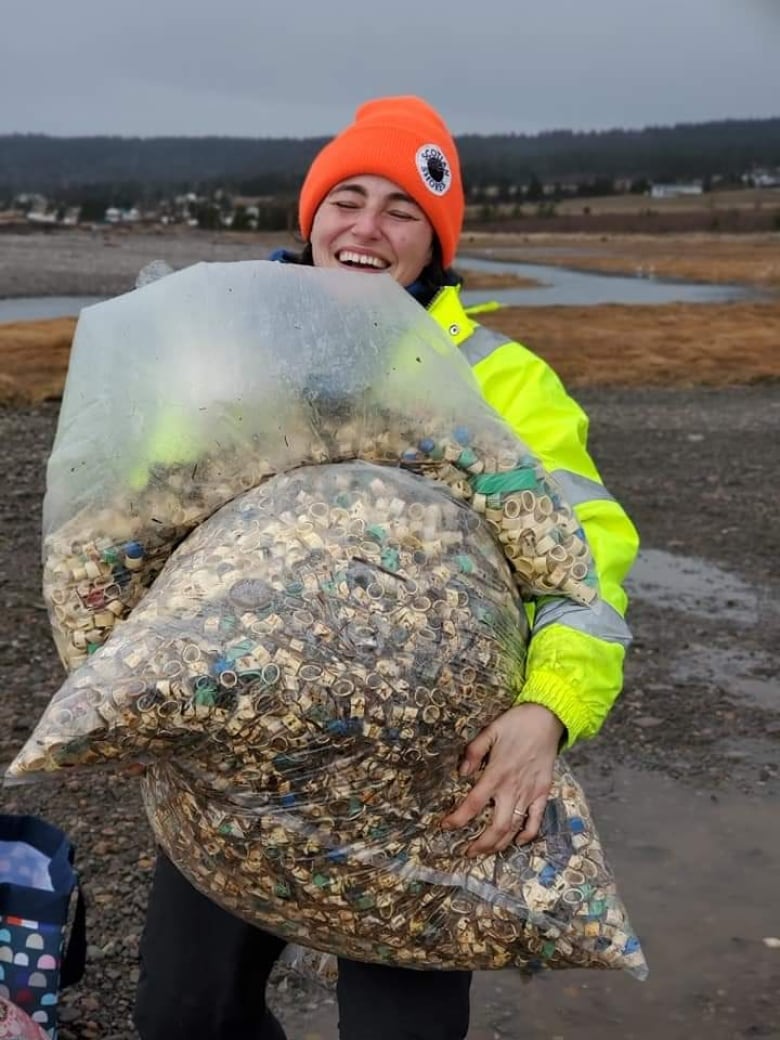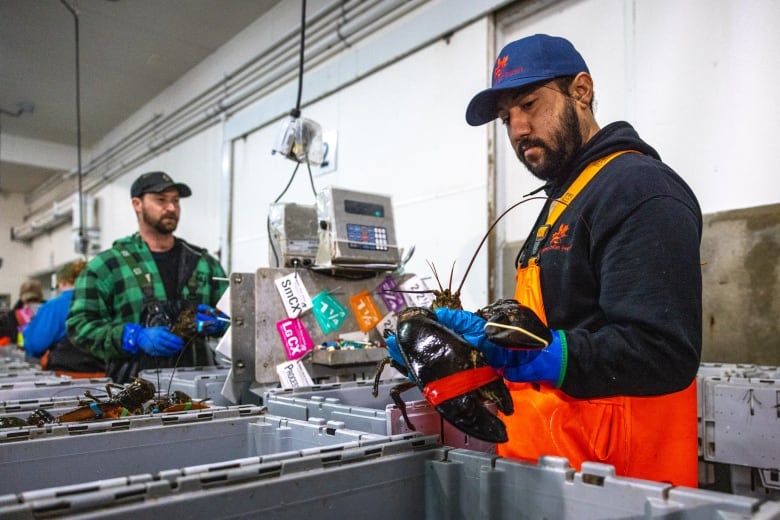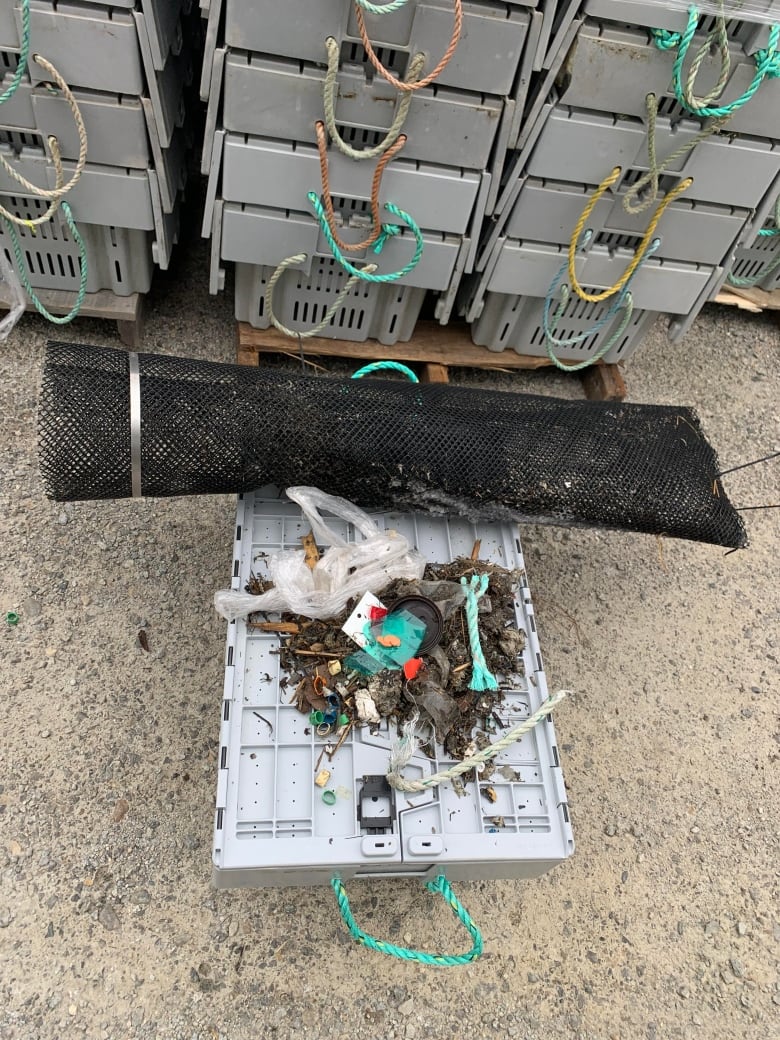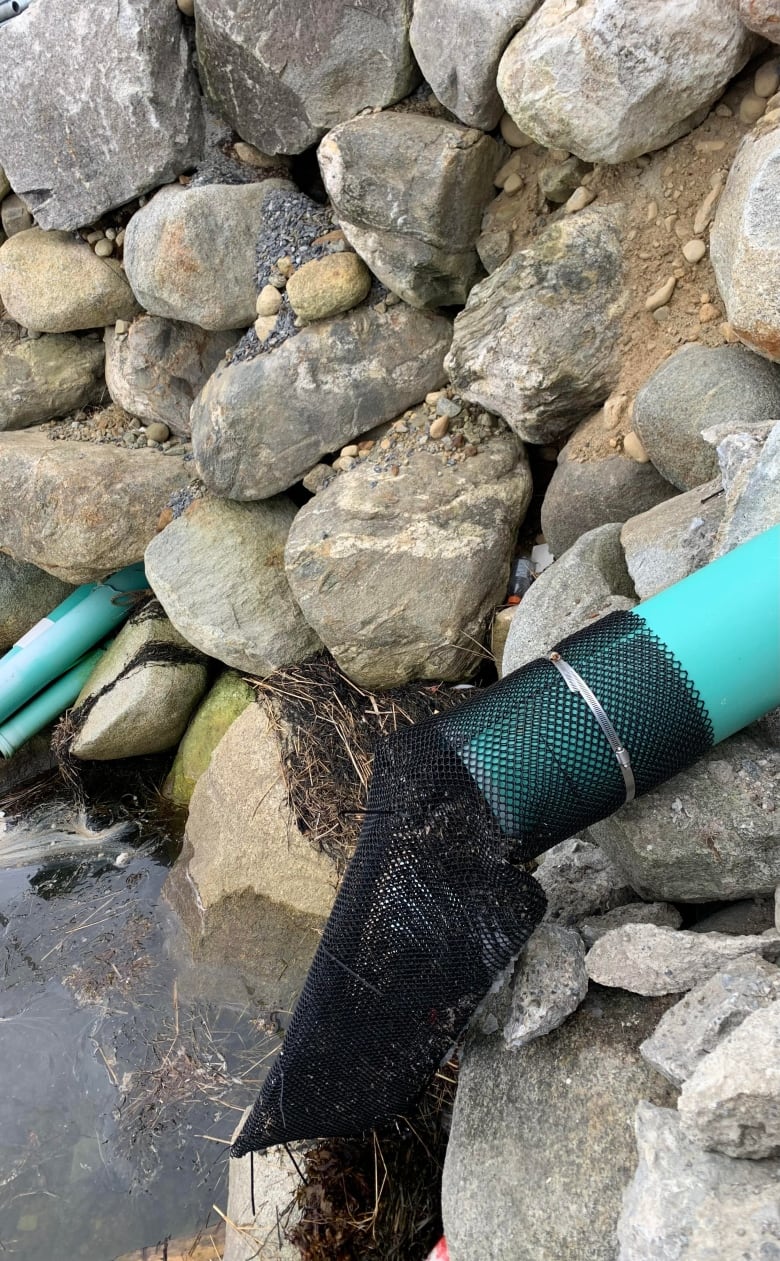If you walk along one of Nova Scotia’s many shorelines, you’ll see rocks, shells, and mounds of seaweed. But some of those beaches are also riddled with colourful rubber bands, ropes and fragments of plastic.
According to Angela Riley, founder of Scotian Shores, a local business dedicated to cleaning the shorelines of the province, the province’s biggest industry is also behind much of the pollution found near the ocean.
Many of the bands and plastics that end up on the beach are the byproducts of lobster fishing, storing and processing — the system that gets lobsters from the ocean onto people’s dinner plates around the world.
“Yesterday we cleaned up 300 pounds of garbage, and today, in that exact same spot, there’s probably 10,000 bands in the seaweed,” Riley said. “Sometimes it feels like there’s millions. You pick up the seaweed and hundreds of them fall out. It’s insane.”

After seeing the problem worsen, Riley began to contact some of the lobster processing plants that appeared to have the most debris on the beaches around their facility.
She said she comes from a fishing family and understands the industry, which makes her want to work with lobster processing plants to reduce the pollution that flows from their pipes.
“It just looks really, really bad on our lobster fishery,” Riley said. “Everybody’s very quick to blame the fishers because they’re the easy target, but we’re finding out that it seems like a majority of [the bands and plastics] are actually coming from the processing plants.”
‘We’re doing everything we can’
Early this year, one company got on board with Riley’s ideas to reduce its environmental impact. Atlantic ChiCan Seafood in Clark’s Harbour, N.S., appeared to be the first to install screens and socks on their discharge pipes.
Since then, more companies have joined in.

Johnny Goodwin, the maintenance technician at Long Point Lobster and Seafood, also in Clark’s Harbour, had been using screens to stop debris from coming into the plant for years.
But when his company built a new facility this year, he decided to also install screens on drains and mesh socks on all the pipes that flush water out of the facility.
“We’re doing everything we can to reduce our footprint and just keep this area clean,” Goodwin said. “I live on an island surrounded by beaches. I love walking the beaches, I don’t like to see debris and garbage that could easily be picked up or captured.”
Goodwin came into contact with Riley on TikTok, where he was posting videos of his new techniques. Riley asked to come to Clark’s Harbour and see what he was working on.
“I just wanted her to … see what I have and see if there’s any problem with it, basically,” he said. “She pretty much gave me her blessing and tried a few tests with some lobster bands on things I’d made, and everything captured perfectly.”

Half a dozen plants using socks
Goodwin said Long Point Lobster and Seafood handles a million pounds of lobster per season, and at any given time, there are between 100 and 2,000 crates full of lobster floating in the holding tanks. That means around 6,000 gallons of water per minute is flowing in to the facility.
The water then has to flow back out into the ocean, and can take bands, plastic tags, and other debris with it.
He said it took him around 30 minutes to fix this problem, and he has noticed about six other plants in his area doing the same thing.
But the simplicity of the solution made him question why every facility in the province isn’t using the same technique.
“It makes you think … ‘Why does this have to be like this?'” Goodwin said. “And it doesn’t, it really doesn’t … I have six pipes covered with socks and it may have cost $40 and about half an hour’s worth of labour. There’s no reason not to.”

Seeking policy change
Riley said while some plants may think they’re not impacting the environment in a significant way, the bands and plastics are detrimental.
“So when they do break down, they’re actually breaking down to micro-plastic type things, so animals are eating them and then they become full and they starve,” she said. “We’ve had reports of loons trying to feed them to their babies. And then sometimes in marshes we actually see them growing up around different grasses.”
She said though some facilities are receptive to her concerns, her suggestions don’t always go over well. When she sees a company make positive changes, she said it’s “uplifting.” But she wants to see new regulations put in place.
“One plant out of gosh knows how many in Nova Scotia is not going to make a huge difference,” she said. “So we need something that’s going to be overreaching, like a policy change, to say ‘enough is enough, we’re not going to allow this to happen anymore.'”
Government response
Nova Scotia’s Department of Fisheries and Aquaculture said there are regulations in place that require the area surrounding businesses to be kept clean.
“Anyone observing litter or waste associated with seafood processing facilities should report the information to the Department of Natural Resources and Renewables,” department spokesperson Marla MacInnis said in an email.
When asked if Nova Scotia will emulate provinces like New Brunswick that require processing plants to reduce the release of any contaminant into the environment, MacInnis said the province is looking into it.
“We are currently reviewing New Brunswick’s regulations to help us determine the best way to effect more meaningful change on this issue here in Nova Scotia.”
